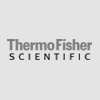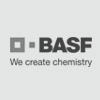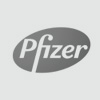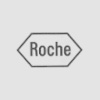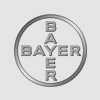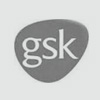- Description
- Specifications
Catalog #: CYT-213
Description:
Interleukin-6 Human Recombinant produced in E.Coli is a single, non-glycosylated polypeptide chain containing 184 amino acids and having a molecular mass of 21000 Dalton.
The IL6 is purified by proprietary chromatographic techniques.
Synonyms:
IFN-b2, B cell differentiation factor, BCDF, BSF-2, HPGF, HSF, MGI-2, B-cell stimulatory factor 2, Interferon beta-2, Hybridoma growth factor, CTL differentiation factor, CDF, IL-6, HGF.
Source:
Escherichia Coli.
Amino Acid Sequence:
The sequence of the first five N-terminal amino acids was determined and was found to be Met-Pro-Val-Pro-Pro.
Purity:
Greater than 97.0% as determined by(a) Analysis by RP-HPLC.
(b) Analysis by SDS-PAGE.
Solubility:
It is recommended to reconstitute the lyophilized Interleukin-6 in sterile 18MΩ–cm H2O not less than 100 µg/ml, which can then be further diluted to other aqueous solutions.
Formulation:
Lyophilized from a 0.2um filtered concentrated (1mg/ml) solution in PBS, pH 7.4.
Stability:
Lyophilized Interleukin-6 although stable at room temperature for 3 weeks, should be stored desiccated below -18 °C. Upon reconstitution IL6 should be stored at 4 °C between 2-7 days and for future use below -18 °C.
For long term storage it is recommended to add a carrier protein (0.1% HSA or BSA).
Please prevent freeze-thaw cycles.
Activity:
The ED50 as determined by the dose-dependant stimulation of murine 7TD1 cells is less than 0.1 ng/ml, corresponding to the specific activity of 1.0 x 10,000,000 Units per mg.
Physical Appearance:
Sterile Filtered White lyophilized (freeze-dried) powder.
Protein Content:
Protein quantitation was carried out by two independent methods
1. UV spectroscopy at 280 nm using the absorbency value of 0.47 as the extinction coefficient for a 0.1% (1mg/ml) solution. This value is calculated by the PC GENE computer analysis program of protein sequences (IntelliGenetics).
2. Analysis by RP-HPLC, using a standard solution of IL-6 as a Reference Standard.
Usage:
Denovo Biotechnology's products are furnished for LABORATORY RESEARCH USE ONLY. They may not be used as drugs, agricultural or pesticidal products, food additives or household chemicals.
References:
1.Title:Identification of ?-Escin as a Novel Inhibitor of Signal Transducer and Activator of Transcription 3/Janus-Activated Kinase 2 Signaling Pathway that Suppresses Proliferation and Induces Apoptosis in Human Hepatocellular Carcinoma Cells .
Publication: Published online before print April 8, 2010, doi: 10.1124/jpet.110.165498 JPET July 2010 vol. 334 no. 1 285-293
Link:http://jpet.aspetjournals.org/content/334/1/285.full
2.Title:Suppression of Signal Transducer and Activator of Transcription 3 Activation by Butein Inhibits Growth of Human Hepatocellular Carcinoma In Vivo.
Publication:Published OnlineFirst December 3, 2010; doi: 10.1158/1078-0432.CCR-10-1123 Clin Cancer Res March 15, 2011 17; 1425.
Link:http://clincancerres.aacrjournals.org/content/17/6/1425.full
3.Title:Identification of ?-escin as a novel inhibitor of STAT3/JAK2 signaling pathway that suppresses proliferation and induces apoptosis in human hepatocellular carcinoma cells.
Publication:Published online before print April 8, 2010, doi: 10.1124/jpet.110.165498 JPET April 8, 2010 jpet.110.165498
Link:http://jpet.aspetjournals.org/content/early/2010/04/09/jpet.110.165498.short
4.Title:enhanced self -renewal of hematopoietic stem/progenitor cells mediated by the stem cell gene sall4.
Publication:
Link:http://www.biomedcentral.com/content/pdf/1756-8722-4-38.pdf
5.Title:Thymoquinone inhibits proliferation, induces apoptosis and chemosensitizes human multiple myeloma cells through suppression of signal transducer and activator of transcription 3 activation pathway.
Publication:Article first published online: 10 MAY 2010DOI: 10.1111/j.1476-5381.2010.00874.x
Link:http://onlinelibrary.wiley.com/doi/10.1111/j.1476-5381.2010.00874.x/full


